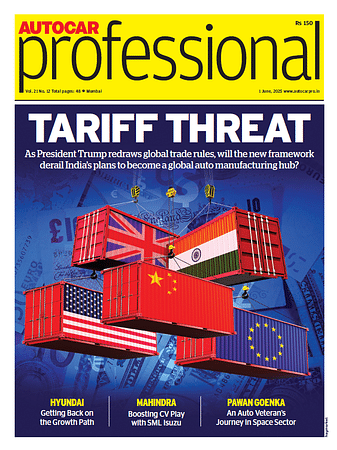Opinion: Automotive developments that didn't make the news
Here are some developments in the automotive space that really shocked me over 300 issues of Autocar India.
Autocar India is 300 issues old. Over the years, we’ve broken many shocking news stories and revealed several unexpected developments. However, here are some that didn’t make the news – developments that, over the years, really shocked me.
I have to start with Maruti and Suzuki. Who would have thought that the small Japanese company that initially helped define the Indian automobile market would still be dominating sales charts? Key drivers included the massive success of the 800 and Alto, and the quick and seamless transition to an affordable made-in-India fuel injection system.
These were followed by the introduction of the legendary Swift with Fiat’s Multijet diesel. And boy, oh boy, the pair did complement each other: power, performance, economy, driving pleasure and attractive looks. Maruti also managed to convert the slow-starting and initially far-from-perfect Wagon R into a success.
And what’s neat is that the powertrain dominance has carried on even today with the introduction of the strong hybrid-powered Grand Vitara. While Maruti’s market share rose to 52 or 53 percent at one time, the fact that it still stands at 40 percent today comes as something of a shock. Talk of a winning combination.
Even more shocking is the fact that Tata and Mahindra are where they are today. Initially, their situation was more a matter of survival than success. In fact, survival – with all the world’s best automakers playing in the same league – itself was a success. And let’s be clear, Tata Motors and Mahindra never had a full deck of cards.
For the most part, this pair were playing with one hand tied behind their back. Today, with engineering and, to some extent, design skills having blossomed, this pair is scaling new heights, each having taken their own path. Tata never sought a partner, and Mahindra, now single, has had the same partner; twice. Go figure.
Something I would have put good money down on would have been the steady and sustained climb of the Japanese brands. Honda, Toyota, Nissan, Mitsubishi – they had everything. The best technology, water-tight processes and the ability to engineer the hell out of just about anything.
Problem was their product planning departments. That and the lack of understanding that Indian customers wanted and demanded cars that were different from the regular Asian fare. See, the Indian car market needs both effort and investment, and the Japanese brands just didn’t put in enough – most sleeping at the wheel for the most part.
That the Chinese were fast gaining in competency, came as something of a surprise, too. This especially after the low grade and cheap Chinese products we’d become habituated to. Remember the whole slew of Chinese bikes that came to India? Often as imports.
They were abysmal. And while the earlier set of SAIC cars launched by Chevrolet just about passed muster, the next generation launched by MG seemingly jumped two generations in one.
So in future, expect the unexpected from the most fascinating and demanding market in the world. And for safe and easy navigation, look no further than Autocar India. We’ve got you covered.
RELATED ARTICLES
The Growth of the Second-hand/Refurbished Bike Market in India
As rising costs and changing mindsets reshape mobility, India’s used two-wheeler market is gaining momentum—driven by af...
Opinion: How will KTM Change After the Bajaj Takeover?
Now that we know KTM has been saved, the question is what its future identity will be.
Why Leasing Dominates India’s Commercial EV Market
Leasing dominates India's commercial EV sector as fleet operators seek to mitigate high upfront costs, battery uncertain...





 25 Aug 2024
25 Aug 2024
 7325 Views
7325 Views





 Sarthak Mahajan
Sarthak Mahajan


 Autocar India
Autocar India


